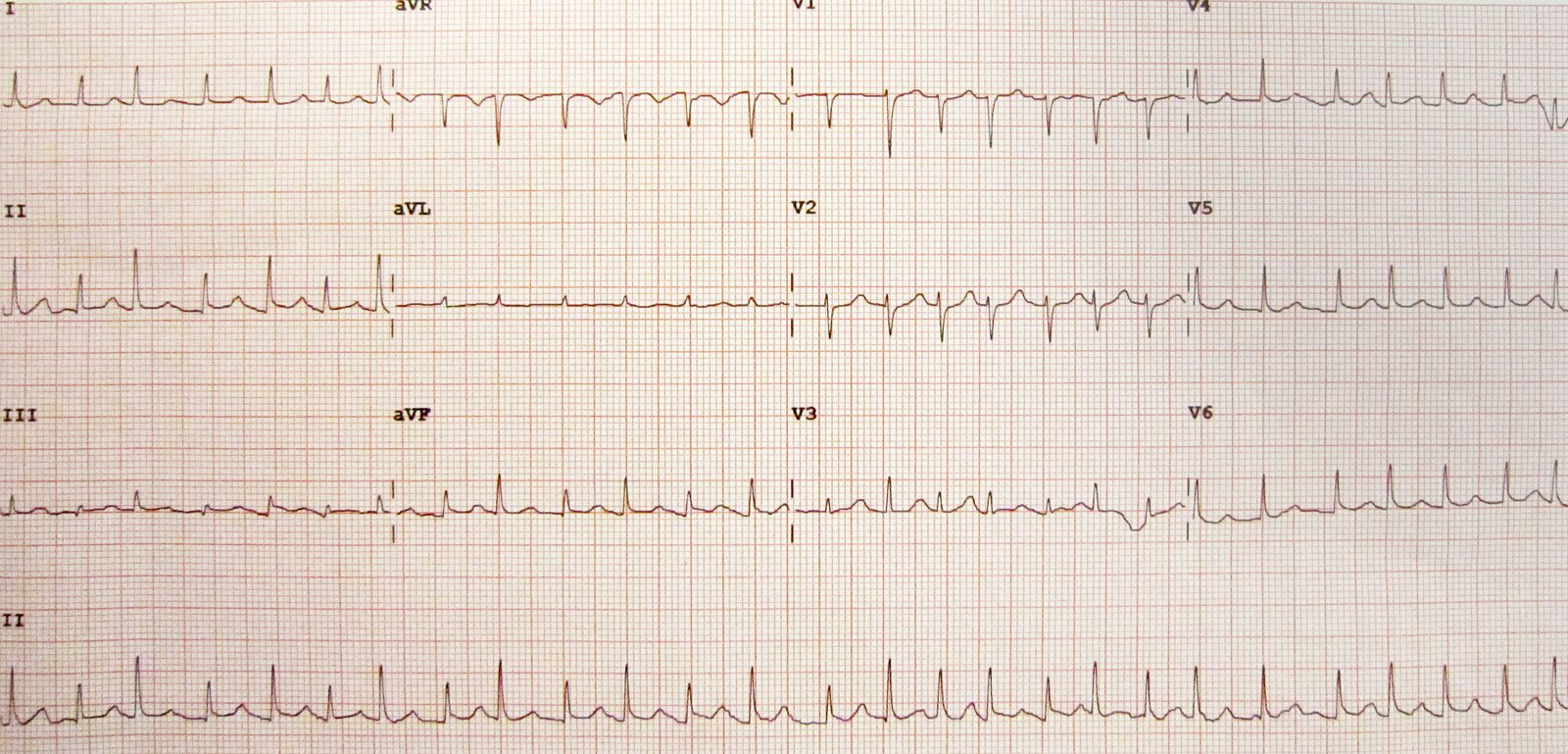- Pericardial effusion: an accumulation of fluid in the pericardial space between the parietal and visceral pericardium. May be acute or chronic.
- Cardiac tamponade: a pathophysiological process whereby elevated intrapericardial pressure from a pericardial effusion causes compression of the heart (especially the right ventricle)
Epidemiology
Etiology
- Hemopericardium: accumulation of blood in pericardial space
- Cardiac wall rupture (e.g., complication of myocardial infarction)
- Chest trauma (traumatic cardiac tamponade)
- Aortic dissection
- Serous or serosanguinous pericardial effusion
- Idiopathic
- Pericarditis (especially viral, but also fungal, tuberculous or bacterial)
- Malignancy (e.g. metastatic spread of noncardiac tumors)
- Postpericardiotomy syndrome
- Uremia
- Autoimmune disorders
Pathophysiology
Clinical features
Diagnostics
ECG
- Low voltage complexes and electrical alternans in larger effusions
- Electrical alternans: consecutive QRS complexes that alternate in height due to the swinging motion of the heart when surrounded by large amounts of pericardial fluid

- Electrical alternans: consecutive QRS complexes that alternate in height due to the swinging motion of the heart when surrounded by large amounts of pericardial fluid
Tip
Don’t confuse this with pulse alternans (beat-to-beat variation in pulse amplitude (ie, systolic blood pressure)), which is most commonly seen in patients with severe LV systolic dysfunction (possibly related to the effect of the Frank-Starling mechanism on the failing ventricle)